
POV: You just pitched an idea for a new marketing campaign or business strategy.
Your CEO says it’s too aggressive, the product manager says it’s too vague, the sales rep says it’s too long, and support? Well, they feel it doesn’t do much to answer the main questions customers usually ask.
For digital researchers or market analysts, this scenario is all too familiar. You just can’t please everyone…or can you?
With market segmentation, companies can optimize their digital strategies using an array of targeted messages and content specific to their audience, making sure that everyone, from C-levels to marketers, and customers included, are happy and on the same page.
But in order to get it right, you need reliable data. That’s where market intelligence and advanced research tools come in.
In this article, we explain how to define your own market segments. We’ll also provide you with some useful tips on choosing the right methods to give you a competitive advantage.
What is market segmentation?
Let’s start with a definition of market segmentation, which refers to the process of dividing a broad target audience into smaller, more specifically defined groups (also known as customer segmentation). Splitting the market into sub-groups makes it more approachable as a whole and helps you create more targeted and curated marketing materials for different audiences.
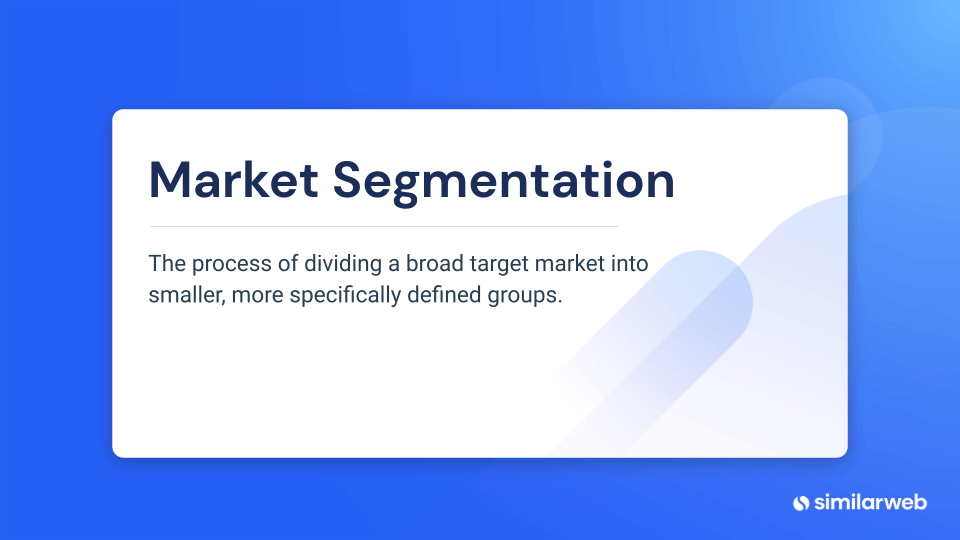
For example, a millennial audience’s primary motivation to purchase your service might be different than the interest that drives an older audience; or what your American audience expects may vary from that of a European audience.
With segmentation, you can create different marketing strategies for each potential customer. The right messaging leads to an incentive to click, and therefore a stronger chance of a conversion.
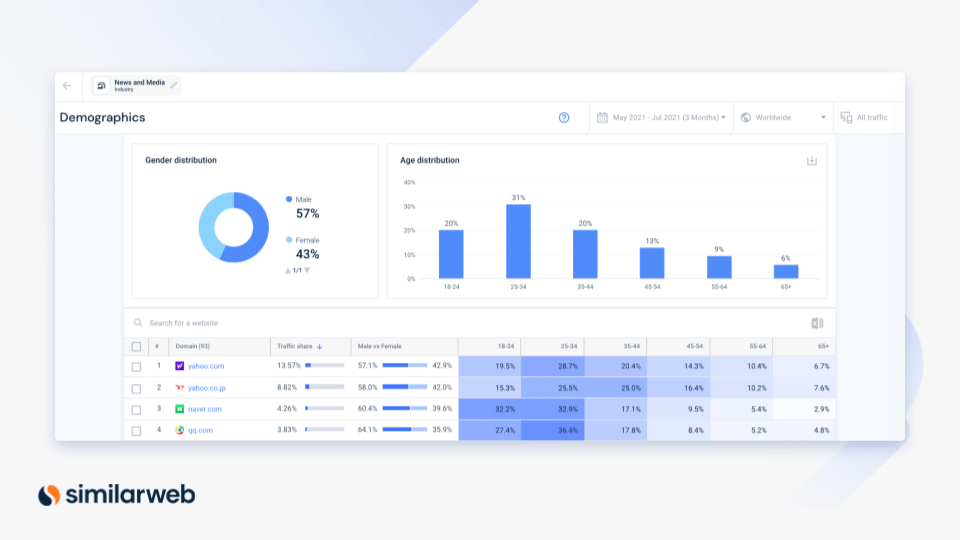
8 key benefits of market segmentation
Data-driven segmentation can result in higher revenue and lower financial risk and here are myriad ways it can improve your overall marketing efforts. Take a look at some of the top benefits of market segmentation:
1. Develop more effective strategies. No need to limit yourself to one approach. Market segmentation lets you apply the best-performing methods for each customer group.
2. Create hyper-focused messaging. Tailor your marketing efforts to the specific pain point of your customer base instead of trying to reach everybody with the same message.
3. Increase response rates. Better targeting and curated messages lead to higher response rates. In turn, you can increase the return on your paid advertising and lower the overall cost of your marketing campaigns.
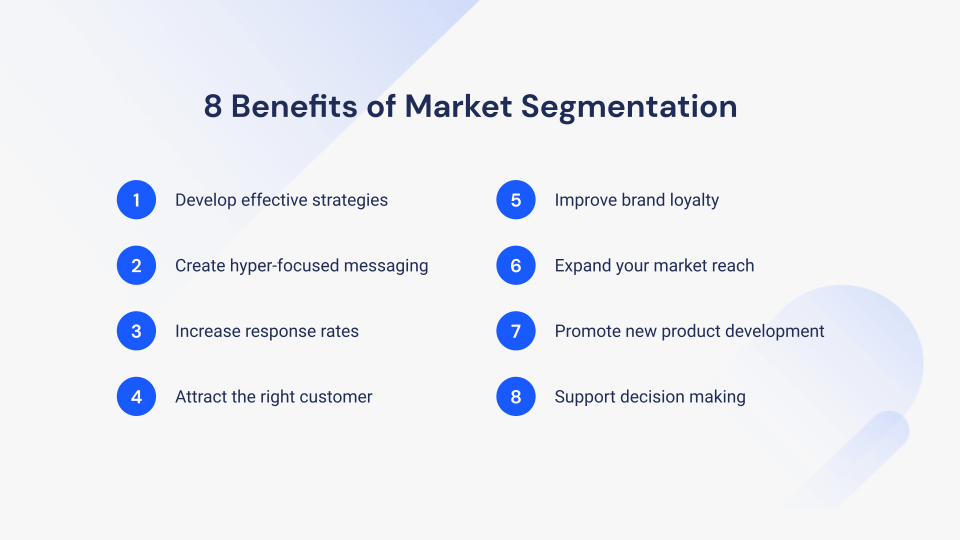
4. Attract the right customer. More personalized and powerful marketing messages draw in prospects who are genuinely interested in your product.
5. Improve brand loyalty and retention. When you meet more of your audience’s needs, they are more likely to remain loyal to your brand.
6. Expand your reach. You may identify niche markets that would go unnoticed if you referred to your entire target audience as a whole.
7. Promote new product development. Segmentation helps you understand your audiences’ needs better. Use this understanding to develop dedicated features or launch new products that provide solutions to their needs.
8. Support decision-making in other business areas. By analyzing the preferences of different segments, you can accommodate the audience better in other areas, such as pricing, distribution, and design.
The 4 types of market segmentation explained
Companies use four primary types of market segmentation. The right approach for you depends on the type of business and the sort of audience you serve.
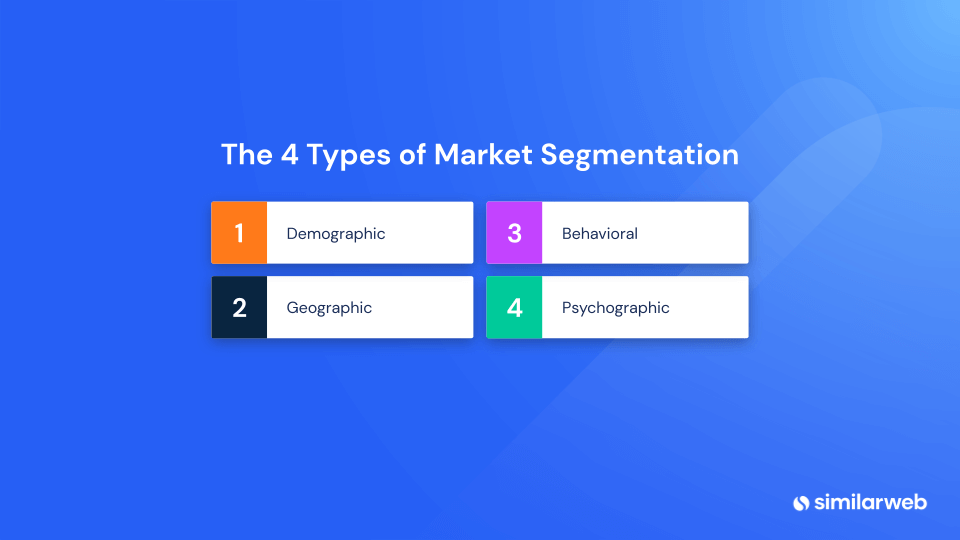
1. Demographic segmentation
Dividing your market according to pre-defined audience characteristics is called demographic market segmentation. This type of segmentation is typically useful in B2C businesses.
Demographic segmentation is done by collecting audience insights and splitting your target market by personal attributes like age group, gender, marital status, family size, levels of educational attainment, and income. In B2B, firmographic segmentation, which considers company variables instead of individual traits, is more common.
2. Geographical segmentation
Technically, geographical segmentation is a subset of demographic segmentation in which you divide the audience based on geographical location. Geographic segmentation is valuable in almost any business: B2B or B2C, a global enterprise, or SMB, service providers, and retailers.
Geographical location impacts language and timezone and has implications on purchasing habits, pricing level, and cultural considerations.

3. Behavioral segmentation
In behavioral segmentation, you create groups based on online behavior represented by engagement metrics. This includes factors such as frequency, duration of visits, bounce rate, and click-through rate (CTR).
You might investigate the channels through which visitors reach your site, the devices they use to access your content, popular content, preferred payment method, and more. With an in-depth conversion analysis, you can gather the necessary data to create effective behavioral segments.
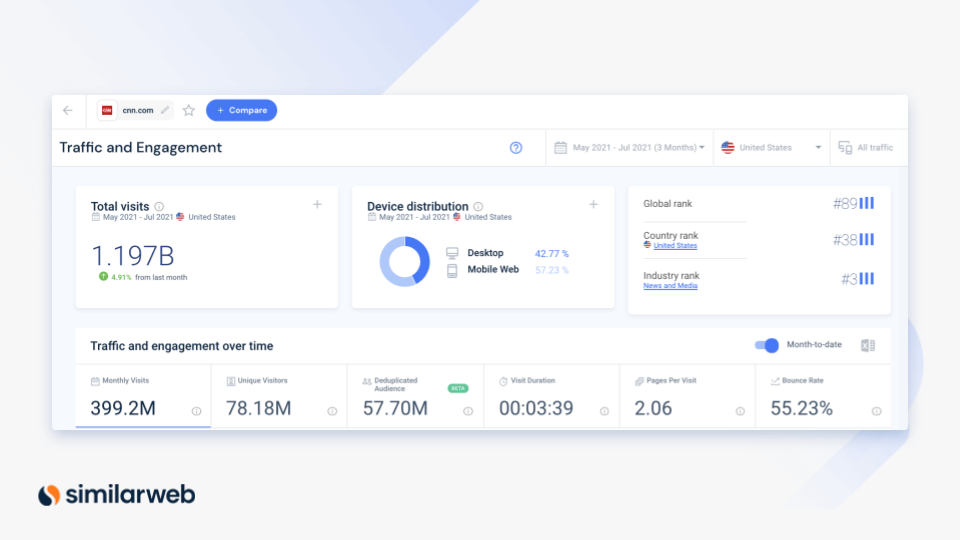
4. Psychographic segmentation
Psychographic segmentation looks at the interests, values, and attitudes of your visitors. It is highly useful for NGOs or companies with a specific social or environmental agenda. Also, in the field of leisure and sports, this type of segmentation can make a difference.
Psychographic segmentation includes investigating what your audience already knows about you and your products. Sometimes a person’s viewpoint can even be a prerequisite for being part of your audience, and the way your audience perceives you relative to others in the industry can impact their decision.
As an example, a basketball player has no use for a tennis racket, and a tennis player has no interest in dancing shoes. An activewear retailer would benefit from providing segmented marketing content.
3 tips for effective market segmentation
If more than one type of market segmentation seems valuable to your business, you’re on the right track. Most companies use a combination of segmentation methods for better focus.
Keep these three tips in mind when creating your market segmentation strategy:
To learn more about the data behind this article and what Similarweb has to offer, visit https://www.similarweb.com/.







Sign up to receive our stories in your inbox.
Data is changing the speed of business. Investors, Corporations, and Governments are buying new, differentiated data to gain visibility make better decisions. Don't fall behind. Let us help.













Sign up to receive our stories in your inbox.
Data is changing the speed of business. Investors, Corporations, and Governments are buying new, differentiated data to gain visibility make better decisions. Don't fall behind. Let us help.





